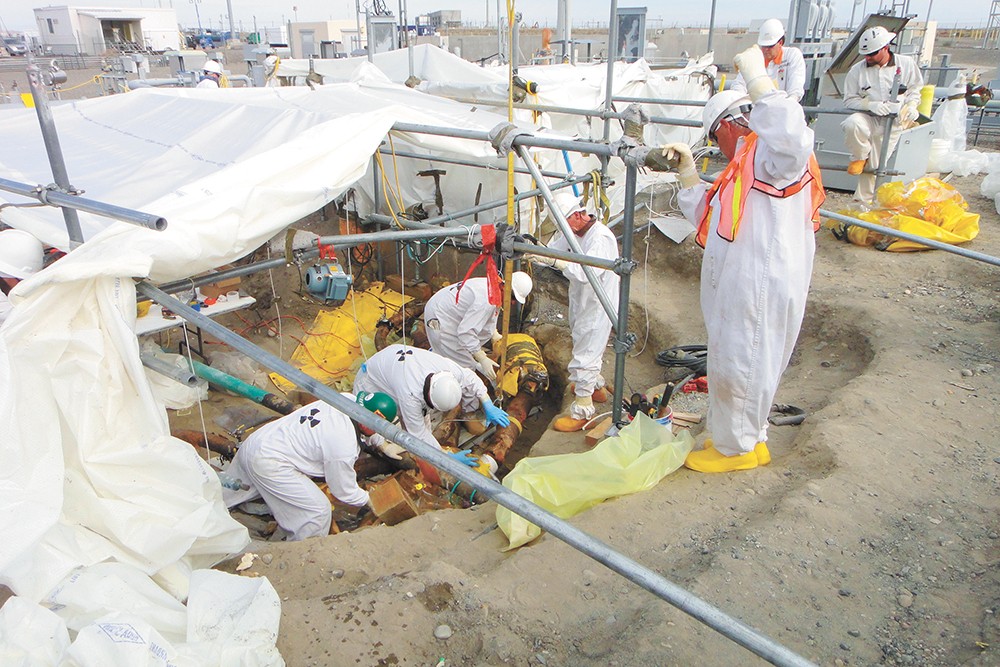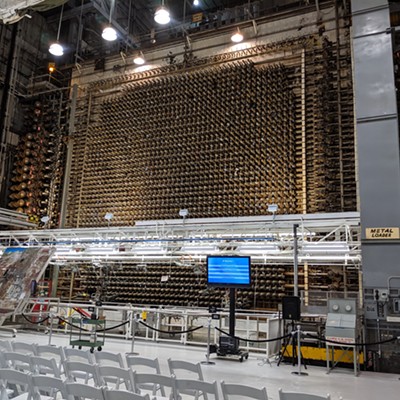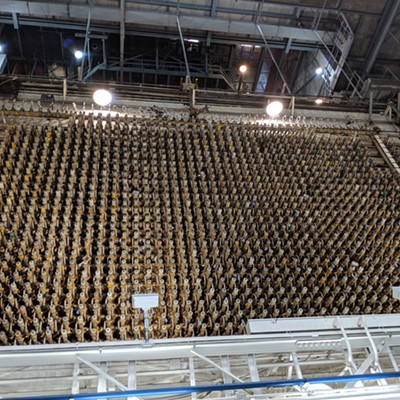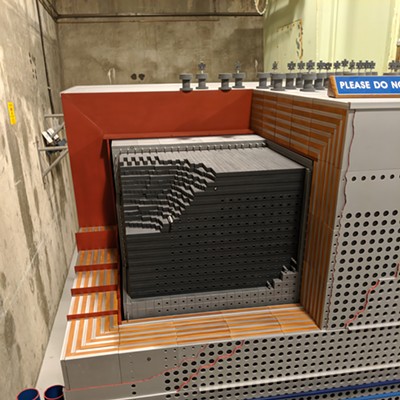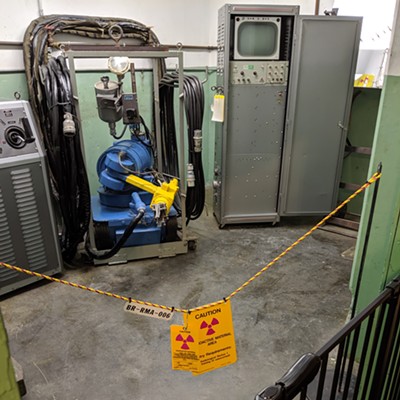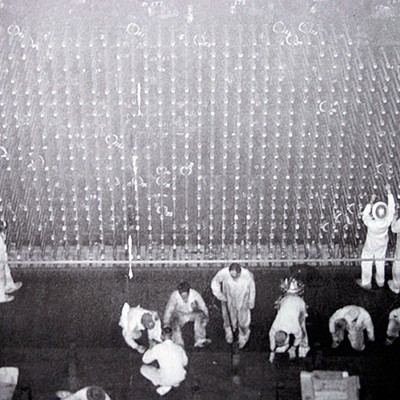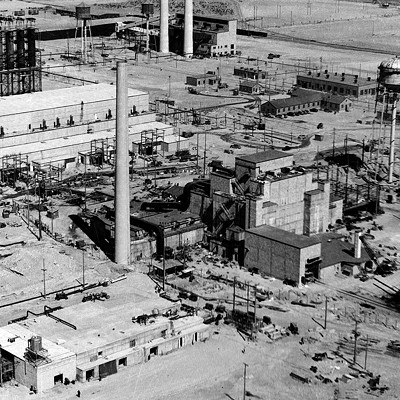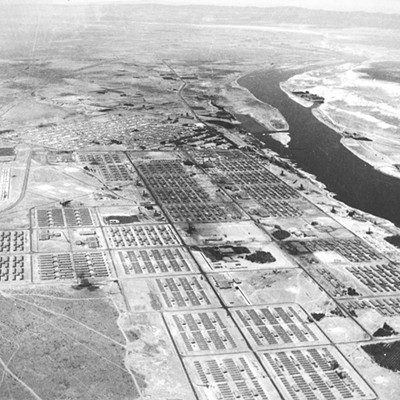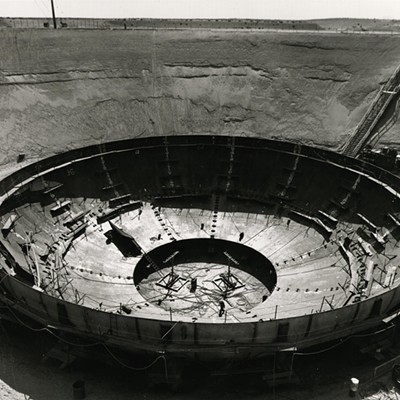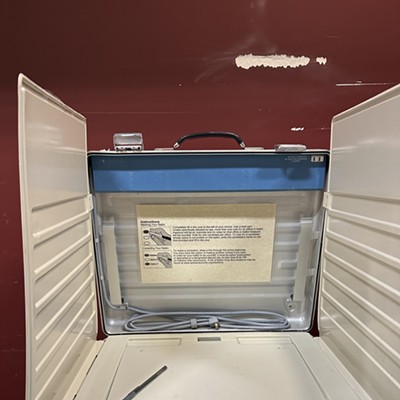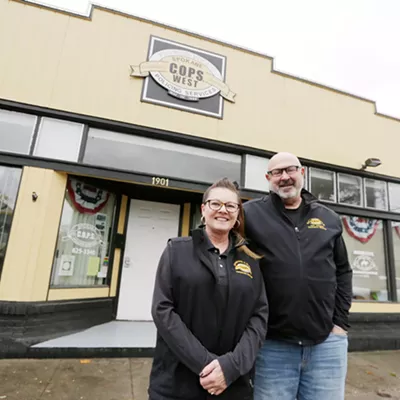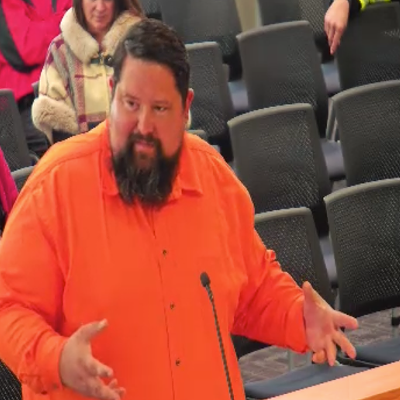In sheer size alone, the Hanford Nuclear Reservation is a hard thing to comprehend.
A 40-odd-mile bus ride separates federal offices at the south end of the site in Richland from the nine nuclear reactors spread throughout the north end of the 586-square-mile reservation.
For decades, those reactors were each filled repeatedly with uranium fuel rods to produce two-thirds of the nation's weapons-grade plutonium stockpile, created from World War II through the Cold War.
Harder to comprehend and harder still to address are the many toxic, radioactive byproducts that came with the creation of that man-made element, some of which won't decay for thousands to millions of years.
The radioactive material is stored in a mix of 100 or so elements in various tanks and underwater pools throughout the middle of the site. In 177 storage tanks, 56 million gallons of toxic sludge is waiting for treatment, and some of it has already leaked into the soil. To the south lies much of the work to create cleanup facilities that are designed to convert the sludge into glass bricks, in preparation for storage deep in the ground in a yet-to-be-determined site.
One underwater pool storing some of the most dangerous radioactive materials — strontium and cesium — contains capsules with 53 million curies of radiation, by some measures more than the active radiation that was spread during the Chernobyl explosion and meltdown in 1986.
In part, it was that frightening event that spurred the end of production at Hanford, where the last reactor was closed in 1987. By 1989, the Department of Energy, the state of Washington and the Environmental Protection Agency finalized the Tri-Party Agreement to guide the cleanup effort.
Thirty years and billions of dollars later, most of the reactors have been entombed in concrete to wait out some of the worst radiation, but progress on treating the toxic sludge has moved frustratingly slow.
From contractor fraud and flawed cleanup designs delaying construction of a Waste Treatment Plant for decades, to shifting administrative priorities and congressional will to dump money into the site, Hanford's cleanup problem is far from solved.
The main priority is the cleanup of the toxic tank waste. But of the millions of gallons to treat, the total that's actually been disposed of off-site so far?
Three gallons in a pilot project.
Three.
"Thirty years it was supposed to take to clean up under the Tri-Party Agreement. That's this year," says Tom Carpenter, founder of Hanford Challenge, a Seattle-based organization that works for worker safety at the site. "We're almost there! Another 300 years or so and we should get there."
COMPLEX PROBLEM
On any given day, Hanford presents a complicated matrix of decisions for contractors and regulators balancing environmental cleanup, human health, intergovernmental relationships and cost.
With court-ordered deadlines looming over the government and its contractors, groups like Hanford Challenge have seen corners get cut, sometimes to the detriment of some of the more than 9,000 workers at the site.
It's part of what sparked the creation of Hanford Challenge in 2007, Carpenter says. He'd worked with the D.C.-based Government Accountability Project for decades on nuclear whistleblowing throughout the country. But Hanford was a special beast and deserved full-time attention.
"Over time, it just became apparent that Hanford was the biggest problem in the complex," Carpenter says. "It was the most environmentally contaminated and had one of the worst cultures in terms of treatment of its employees."
The cleanup has seen many issues related to worker safety — from not giving workers proper access to workers' compensation or safety (an issue that was settled in court last year) to not covering the Plutonium Finishing Plant during its demolition. That 2017 incident resulted in plutonium dust going into the air and exposing 42 workers to radiation.
"That contractor still works out there, which I don't get," Carpenter says. "There's actually no consequence to poisoning their own workers. They get to keep their contract and work."
Complicating things, Hanford is just one part of Energy's portfolio of 16 nuclear cleanup sites, which also includes a nuclear waste treatment site at the Idaho National Laboratory and the Savannah River site in South Carolina. The Government Accountability Office earlier this year estimated that Energy will have to pay at least about $500 billion for environmental cleanup across the remaining nuclear sites, but another government report released this year found that Hanford alone could cost upwards of $600 billion over the next century, in a worst-case scenario for cleanup.
Compared with other sites, the delay in work at Hanford becomes more stark, as a footnote in the Government Accountability Office report from May noted: "As of the end of 2017, the Savannah River site had treated about 7 million gallons of tank waste, and the Hanford site had treated 3 gallons under a demonstration project."
The pressure to catch up may be part of why the federal government proposed changing the definition of "high-level radioactive waste" earlier this year.
Under the new definition, some of the waste at Hanford would be considered less dangerous. Rather than put it through the Waste Treatment Plant — which has been under construction for going on 20 years and where the material would be sorted and turned into glass or "vitrified" — some of the low-level waste might be treated similarly to tanks at the Savannah River site. Those have simply been filled with grout.
"We're almost there! Another 300 years or so and we should get there."
tweet this
Washington state and others around the country have voiced their concerns about the move, which some view as a way for the federal government to cover its problems in concrete and walk away. Current plans for the waste at Hanford require an underground geologic repository for the glass bricks to be stored at, but after communities in Nevada objected to the potential use of Yucca Mountain, there is no dump site identified.
Still, those who want to protect the Columbia River from getting contaminated if more material leaches into the groundwater say the waste needs to be glassified and moved off-site if the cleanup is truly going to mean anything.
"This is a thing that's setting up a huge confrontation and conflict down the road with the state, with public interest groups, and with tribes that all want to see the cleanup be as effective as possible to protect future generations even after this civilization is gone," Carpenter says. "Because who knows what's going to be there in 10,000 years or a million years?"
LOW LEVEL, HIGH RISK
The decades of slow progress on the cleanup is part of why Richland Mayor Bob Thompson says he's on board with the federal government's move to reclassify high-level waste, and potentially mix some of the low-level waste with grout and leave it in place.
Thompson is also chair of the Hanford Communities board, which represents the Tri-Cities and communities that surround the nuclear reservation, whose economies largely rely on the cleanup work and who are most at risk if anything goes wrong on site.
"Playing games or litigating games puts my community at risk. We're the ones who would suffer if things go bad," Thompson says. "I think the state's concern that it's not as safe as glass may not be as valid. Even if we get it out of the tanks, the state's concern is where are they going to put it? There isn't a place in the nation to put it right now. So why don't we make our people safer, cheaper, faster?"
Old infrastructure on the site makes any delay in the cleanup a problem, he says. For instance, when one of the Plutonium Uranium Extraction Facility (PUREX) tunnels containing rail cars filled with radioactive materials partially collapsed two years ago, things could have gone way worse.
"Had the wind been blowing it would've been a pretty negative situation for us," Thompson says. "This stuff is getting old. There's a lot of infrastructure that was created in the '40s and '50s. We're at risk."
Significantly, he sees the state's efforts to ensure the best possible cleanup is used — even if it takes more time — as shortsighted. The best laid plans still require funding. Congress could lose the political will to fund the cleanup, which is already falling short of the $4 billion required per year to be on track for mandatory goals, Thompson says. Current funding is about $2.5 billion per year.
"So we've got this train coming down the track. I see it. I think we only have a certain amount of time to ensure our safety," he says. "Apparently they're ready to wait for the perfect solution. Maybe that works, maybe it doesn't. I think it's a bad bet. If it's my family, I think it's a bad bet."
Thompson says he worries about a lack of willingness to compromise on a path forward.
"To get this back to pristine condition, I don't think it's possible and I don't think we should try to mislead people that it is," Thompson says. "If you look at the goal, to get material off-reservation, and we're three gallons and maybe $20 billion later, maybe we didn't do so good."
'AHEAD OF SCHEDULE, UNDER BUDGET'
Earlier this month, soon-to-resign Energy Secretary Rick Perry visited the Hanford site to celebrate one of the most recent cleanup projects being lauded as a success.
Flanked by U.S. Reps. Dan Newhouse and Greg Walden, Perry congratulated dozens of workers for their role in completing removal of toxic sludge from the K Reactor area to another portion of the site that's farther away from the Columbia River. Many workers sat among politicians and community representatives in folding chairs set up next to the old reactor, while some stood sipping coffee in the cool October air.

Perry first recognized tribal representatives from the Umatilla Reservation, Nez Perce, Wanapum and Yakama Nation, whose relatives and ancestors lived off the land, and who know the importance of the history of that place.
"We just stepped away from touring that B Reactor. Seventy-five years ago, the idea that this relatively young country, this really untested country, could do the work that it would do, to start that facility and 11 months later have it operating as the first reactor, I mean is a stunning moment in time for this country. It's a great reflection of who we are as a people to be able to do that type of incredibly difficult, technologically advanced work, and change the world as we know it," Perry told the crowd. "But we're here to celebrate an achievement of a different kind today."
He and the other speakers repeated over and over how great it was that the work came in ahead of schedule and under budget — work started in June 2018 and was scheduled to end in December this year, but was finished in September instead, costing about $19 million instead of $23 million.
However, a closer look at the K Reactor area history shows the cleanup has taken years and sparked questions about its accounting. A 2017 audit by the Energy Department's inspector general office noted concerns that, at one point before the sludge removal started, the project costs were artificially reset to zero, which could make the project appear as though it didn't go over budget.
"The new performance measurement baseline established for the Sludge Removal Project erased a large negative cost variance of $17.9 million," the audit states. "We are concerned that [CH2M Hill Plateau Remediation Company's] performance on this project will be overstated."
It's just one of many examples of projects that have cost more than expected, with attempts to disguise mistakes along the way.
CASH COW
The Energy Department celebrates the amount of work that has been completed on the site. Six of the reactors have been entombed in concrete (plus B Reactor was preserved as a museum), hundreds of buildings have been demolished, and more than 18 million tons of contaminated soil have been moved away from the Columbia River to an engineered landfill on site. One facility was built as an exact replica of one of the most contaminated buildings, so workers can practice at scale the work they'll do remotely with robots at that location.
Those super radioactive strontium and cesium capsules that are currently stored underwater? Energy plans by 2025 to move them into concrete casks that will be cooled with passive airflow, reducing concerns that an earthquake could take out the current water-cooling system and put not just Central Washington, but the entire Northwest (including Spokane and North Idaho) at risk.
But with no major federal push for accountability and oversight of major contractors on the site in the past 18 years or so, Washington state Rep. Gerry Pollet says it sometimes feels like accountability has gotten less strict.
Pollet, who is also the founder of Hanford cleanup activism group Heart of America Northwest, says there are many examples of where contractors not only bungled projects, but put workers in harm's way and walked away with the ability to still make millions from the projects on site.
"My favorite example of all time, because of the health implications of it, is when the Department of Energy first proposed that it was going to adopt its own rules to protect workers from deadly exposure to beryllium," Pollet says.
In an investigation, Pollet and others found that Fluor Hanford, a contractor that was hired to test buildings on the site for the presence of beryllium, used a method that only detected the element in amounts that were more than two times higher than the safety limit. Based on non-detection at that higher level, many buildings were marked free of the contaminant, and workers were allowed to go there without protective gear.
"This wasn't just a case of abuse and fraud, it was a case that had severe health consequences. As occupational medical experts said at the time, sending a [beryllium] sensitized worker back into a building where they may be exposed again to beryllium is a death sentence," Pollet says. "My belief is they should've been prosecuted for it, in addition to losing all their fees and having to repay the government as fraudulent activity. But instead, the Energy Department not only let them keep their payments, but paid them to do it again."
Similarly, Hanford Challenge's Carpenter says workers and whistleblowers from the site paint a picture of intentional problems with projects, intended to keep paychecks from the federal government flowing.
In particular, delays on the Waste Treatment Plant stand out. The plant was supposed to be ready to pretreat tank waste and convert both high and low-level waste into glass before 2010, but the project saw delay after delay. Some of that happened because construction on the plant started before the cleanup process design was even done being conceptualized and found safe. Other portions were delayed when a contractor didn't use materials that were known to meet nuclear safety standards.
Now, the only project at the plant near completion is a process to treat a fraction of the low-level waste and turn it into glass. That's slated to open by 2023, but the rest of the plant isn't set to become operational until 2033, and the recent move to reclassify high-level waste nationally makes the final plans for the high-level waste treatment portion of the plant somewhat less certain.
"The problem wasn't the science or engineering. It was incompetence and corruption, and mismanagement," Carpenter says. "This has been used as a giant corporate ATM. You get the contract, you pop in your card, and money pops out. It doesn't matter how much you screw up, how much you steal, how much you misuse. The money keeps coming year after year after year. There's no consequences."
An internal audit from the Energy Department's inspector general in November 2018 confirms that contractor problems have been rampant.
"The Hanford site has been plagued with mismanagement, poor internal controls, and fraudulent activities, resulting in monetary impacts totaling hundreds of millions of dollars by the various contractors involved at the site," the report states. "As many of the weaknesses continue, without more aggressive oversight of contractors and subcontractors, millions of dollars will continue to be at risk for inappropriate charges and potential fraudulent activities." ♦
Hanford Live: Let's Talk About Hanford Cleanup
State and federal agencies host a live streamed conversation about past, current and future goals for site cleanup and management, along with a facilitated Q&A session. The goal of the event is to open communication between Hanford leadership and the public regarding the environmental cleanup. Thu, Nov. 7 from 7-9 pm. Register online at hanfordlive2019.eventbrite.com.
ABOUT THE AUTHOR
Samantha Wohlfeil covers the environment, rural communities and cultural issues for the Inlander. Since joining the paper in 2017, she's written about how getting out of prison can be deadly, how child marriage is still legal in many parts of the United States, and how climate activists avoid a narrative of total despair. She can be reached at [email protected] or 325-0634 ext. 234.

